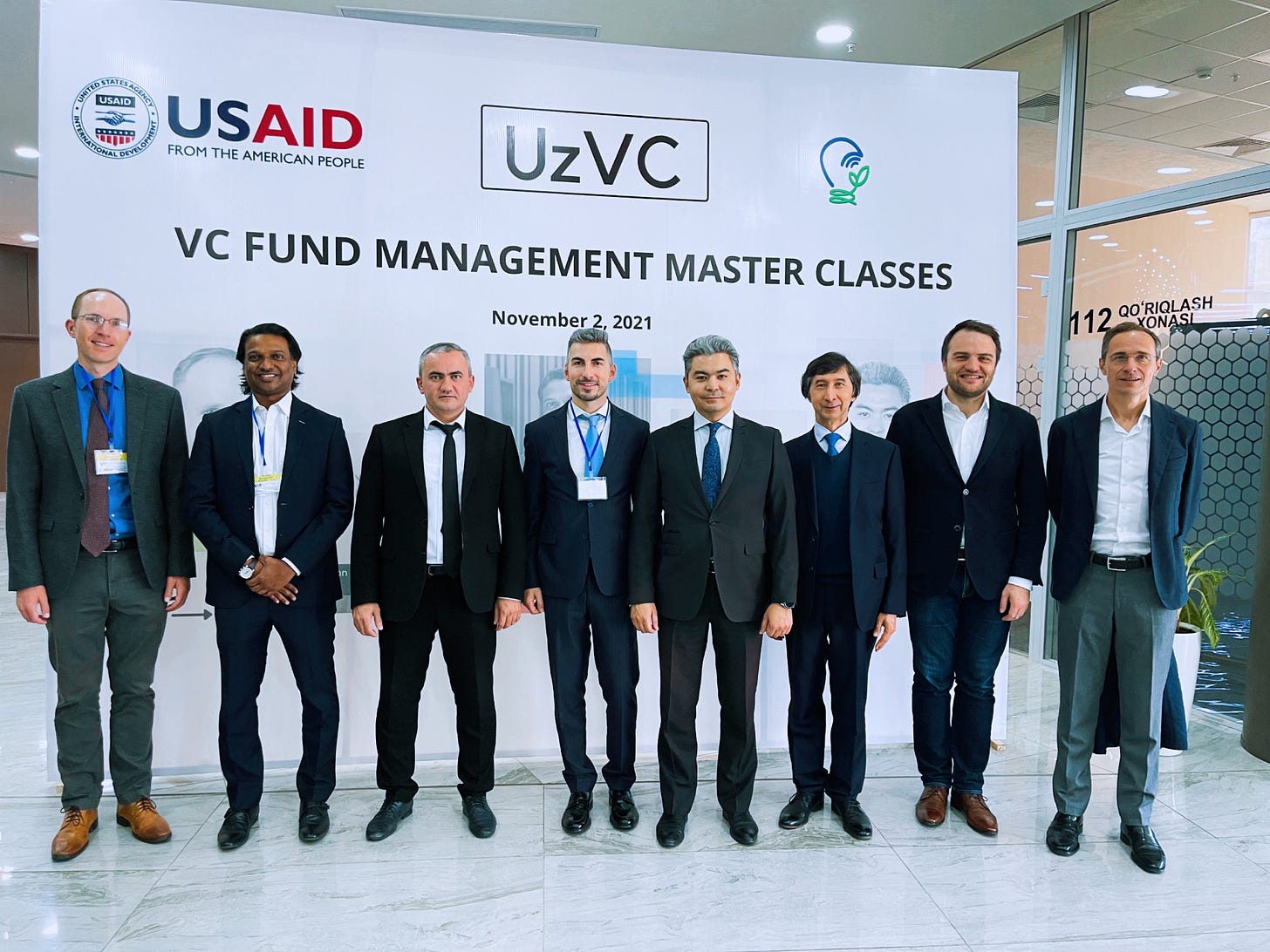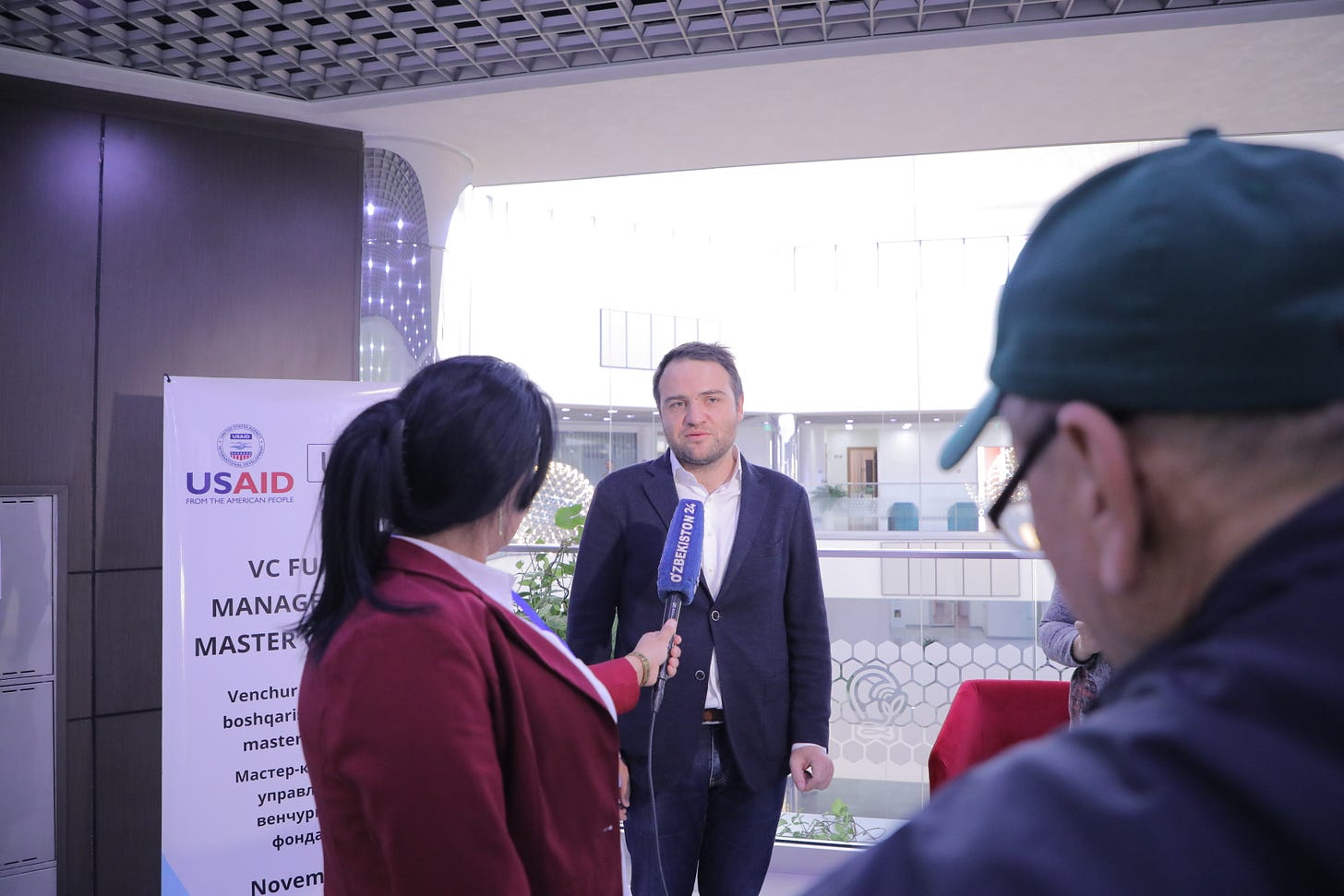November 14; Venture building in Central Asia 🇺🇿🇰🇬
Going off the beaten path to share work experiences and lessons learned... this was my week 🚀
Happy Sunday,
I’m finally in Sofia again, looking back at a fantastic ten days spent in Uzbekistan and Kyrgyzstan. About two years ago, I got more involved in that part of the world through a USAID-backed project called Future Growth Initiative (FGI), that seeks to provide skill sharing and technical assistance, to build capacity in a number of economic areas in the five countries that comprise the region known as Central Asia. One of these areas is venture entrepreneurship, and throughout 2020 and 2021 I’ve helped out remotely with a number of initiatives, including holding several TRACTION Camp workshops for local founders and advising the government of Uzbekistan on setting up infrastructure for a national venture capital fund.

All the more so, it was great to finally visit the region, and to bring with me a number of friends and associates who are much better experts at the business of setting up venture infrastructure than I am.
For one, here in Bulgaria we have built up a great track record in the past decade. Going from virtually nothing to a startup ecosystem of nearly 20,000 professionals, with ten VC funds managing north of EUR 300m in capital, it’s an example that can yield great lessons for other countries aiming at shifting their economies towards tech and entrepreneurship.
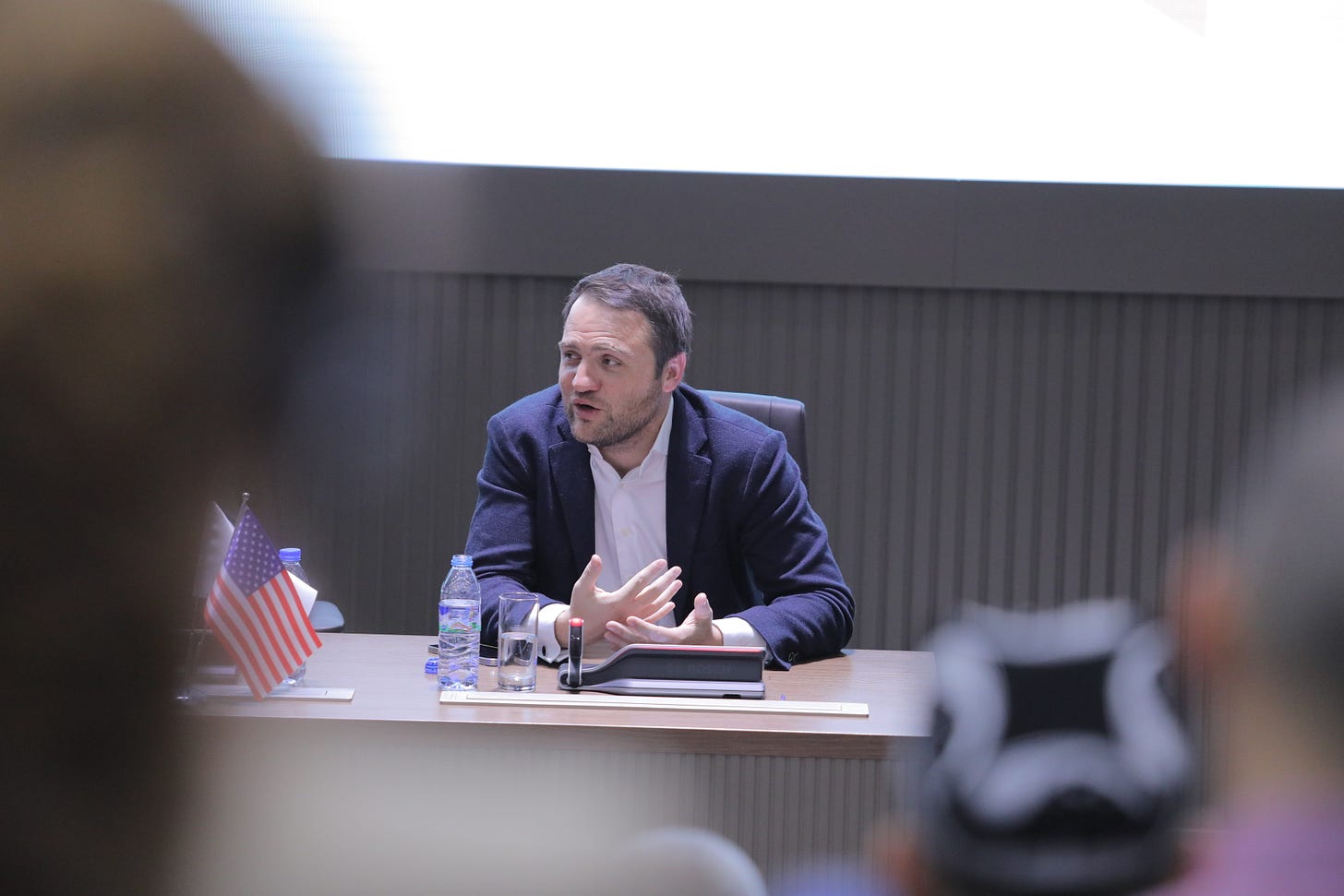
Central Asia is a fascinating region. Last week I wrote a bit about its history, which basically comes down to a mix of long-gone Silk Road wealth and culture, and a legacy of nomadic tribes that roamed its deserts and mountains since the beginning of mankind. In the 20th century, the entire region was colonized by the Soviet Union, which pushed through rapid industrialization and urbanization, only to dissolve thirty years ago, leaving the newly formed independent countries having to establish their economic and social identities for themselves.
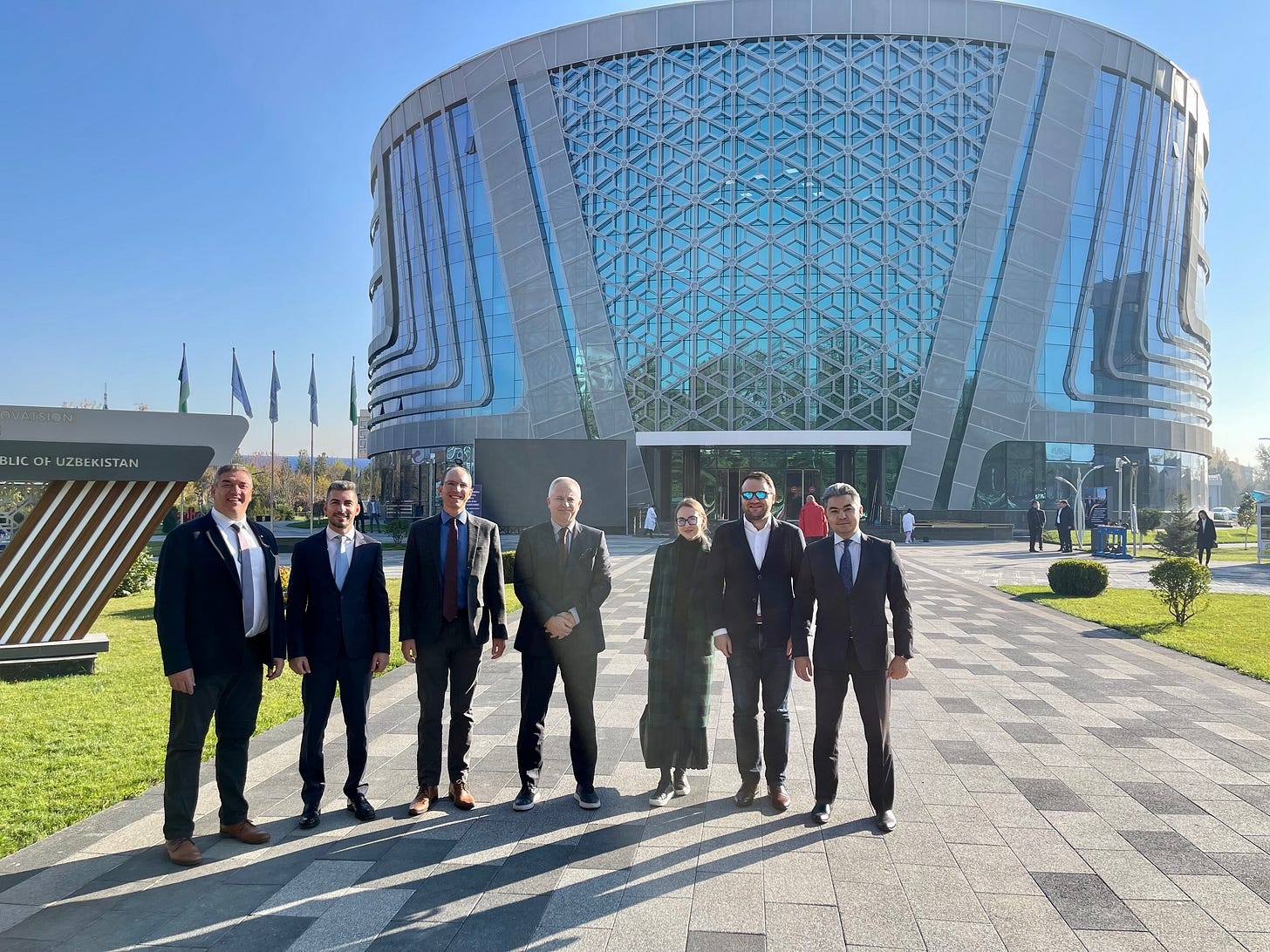
As a result, there is a tremendous eagerness and interest in policies, tools, and instruments that can help the local economies change course and retain the educated and the young with interesting and rewarding work at home.
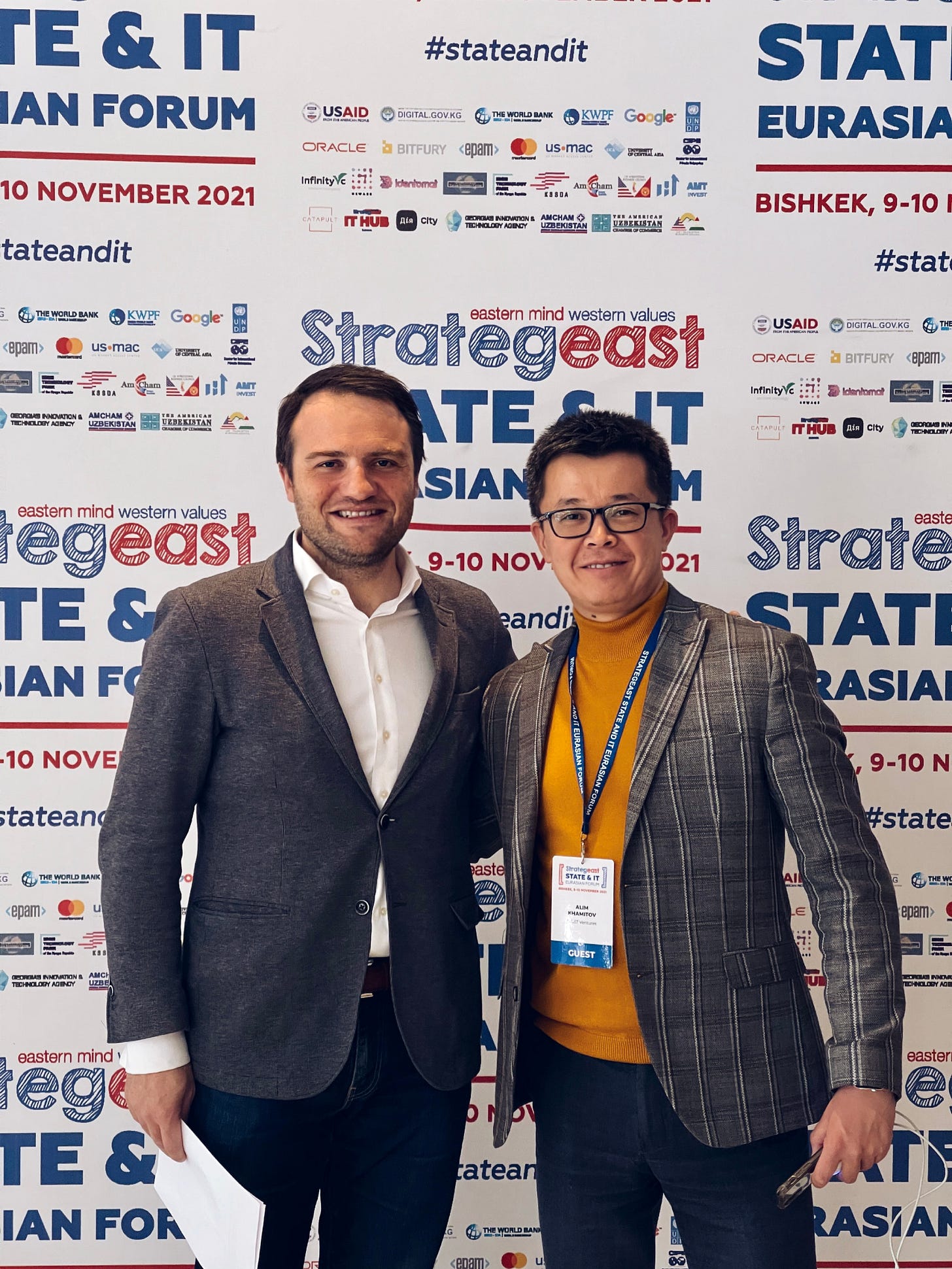
Quite understandably, one such important vector is the venture industry. All five countries have a legacy somewhat similar to other former eastern bloc countries, including Bulgaria, when it comes to decent base-level technical higher and vocational education. Combined with oil and gas profits (notably in Kazakhstan, Uzbekistan, and Turkmenistan), it creates for a political willingness and ability to invest in the creation of venture opportunities.
In Uzbekistan we spent four days working with the national VC fund, and visiting the various brand-new innovation parks, coworking spaces, IT academies, which all didn’t exist even as concepts when I last visited Tashkent five years ago. On the fund side, I was glad to bring with me several of the key persons that were responsible for the achievements we have in Bulgaria, like the founding director of the national holding fund for European Structural Funds invested in venture instruments, the current president of our national venture capital association Evgeny Angelov, and the former head of the Bulgarian national fund-of-funds Vladimir Danailov.
Apart from that, it was great to have my venture lawyer friend Anastasia Bykowskaya, Singapore’s Quest Ventures’ regional partner Ruslan Rakymbay, and Kip Stringfellow from 500 Global’s expansion team with us as well.
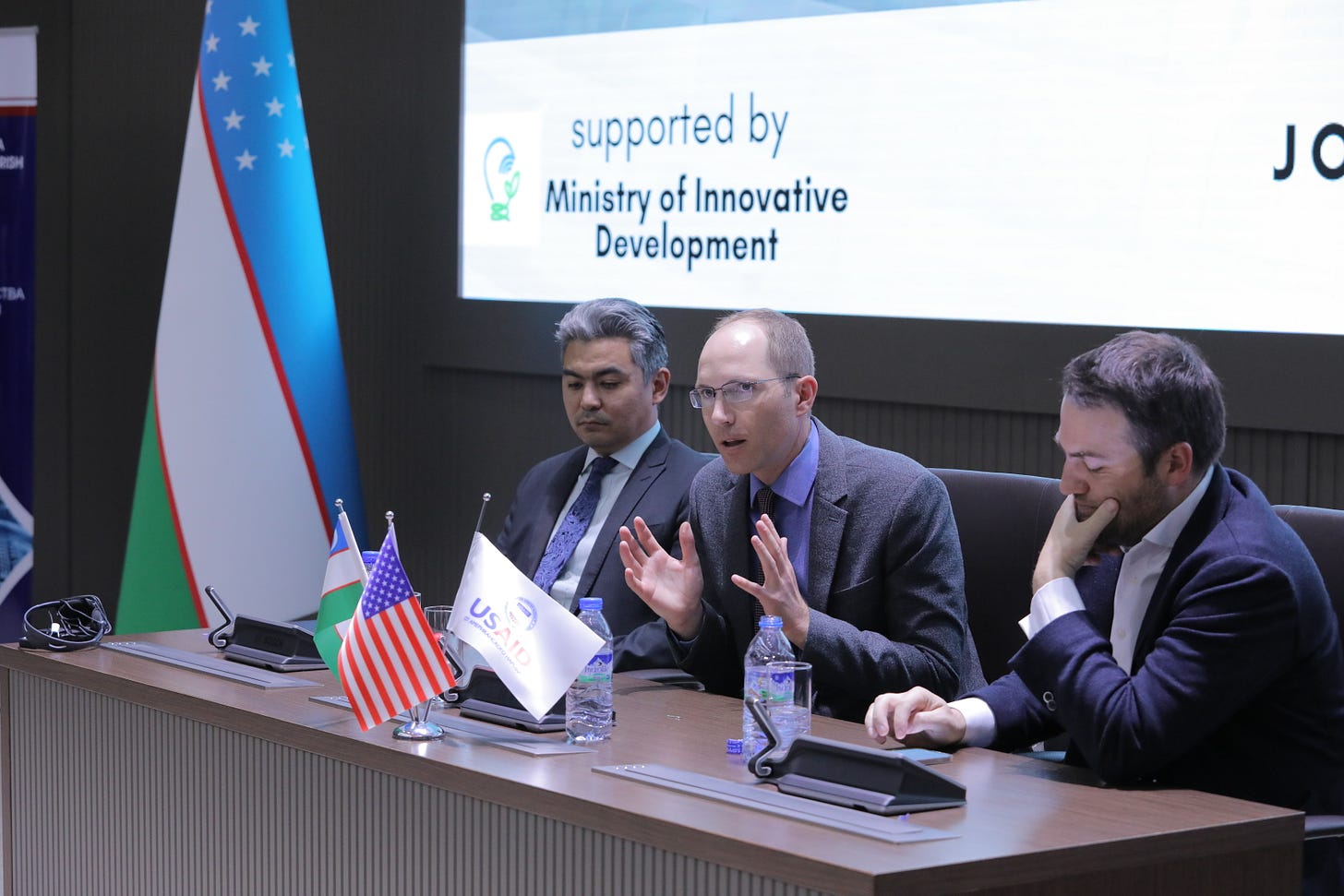
To me, it is really inspiring to see a nascent venture ecosystem, and I know one when I see one right away. Founders whose eyes light up when they meet someone who’s been through the same venture ups-and-downs before, local successful entrepreneurs who are interested in this new angel investing thing they’d heard about from abroad, but don’t know much about yet. And that feeling when you get to visit a country’s biggest internet business, which only has 50 people employed and just closed its first seven-figure funding round.
After Uzbekistan, I continued on to Kyrgyzstan, my first visit to the country, where together with the FGI colleagues we took part in the StrategEast Eurasian Forum, a conference on best practices in the field of connecting governments and the IT industry. I didn’t see much beyond the hotel where we stayed and where the conference took place, but my biggest takeaway from there was how good and essential it is, to actually go and meet people in person. We kind of lost that during the Covid-19 pandemic, and I really hope that we can go back to physical meetings and networking fully in 2022.
All in all, Central Asia is a very promising place. Its arrival in the digital space is late, but all the more fierce. Some latest technological trends, like neobanks and e-government, are actually leapfrogging in development there, adopting much faster than in Western countries, due to lacking legacy systems or alternatives. Venture capital opportunities are sharply on the rise, as more and more regional and global funds open local offices, and local organizations announce new proprietary funds.
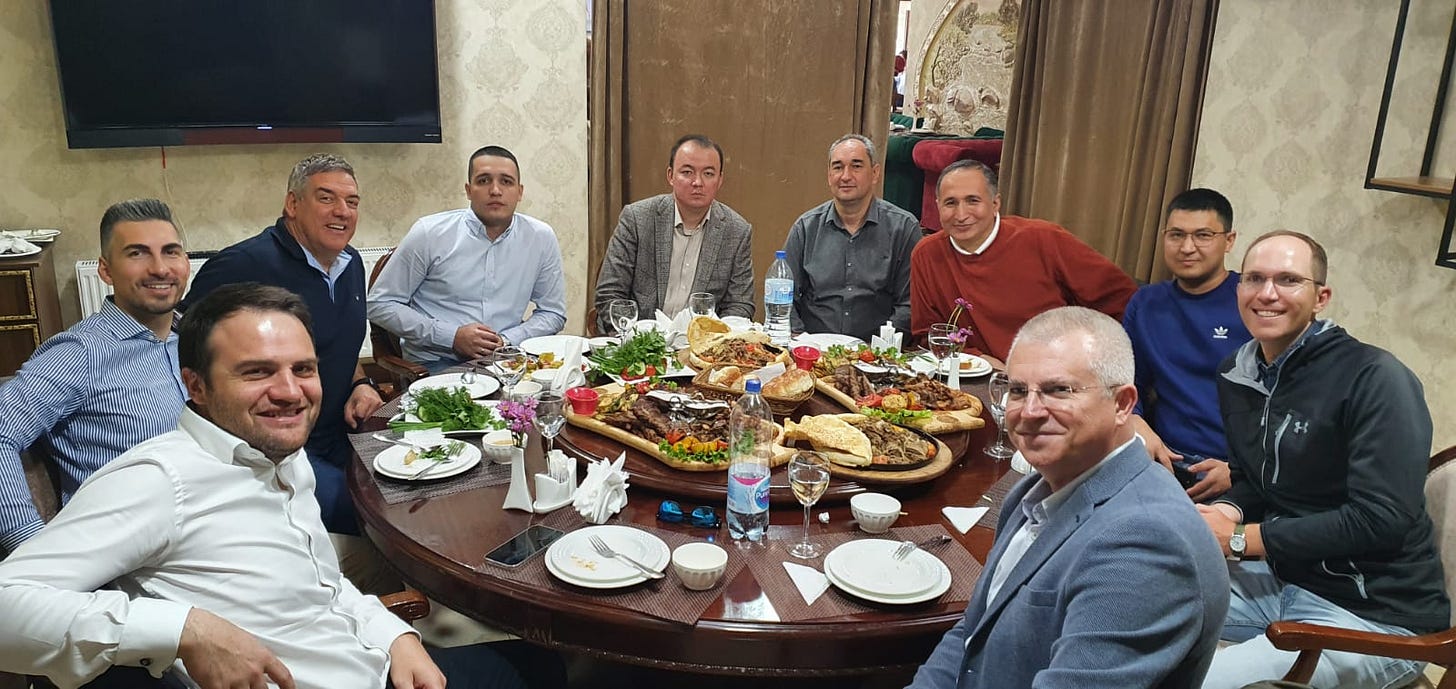
Ten years from now, some of the people I met on this trip will undoubtedly make such trips as the one we made this month, to other parts of the world where new venture projects will be taking off, sharing stories about the venture successes of the 2020s in Central Asia as lessons learned and best practices established. Today, I can only be grateful for the opportunity to see that inception happening live and with my own eyes. And I can’t wait to go back again in the future to have a bigger part in it.
Thanks for checking in today and talk to you next Sunday! 😇
If you enjoyed this Sunday Max update, feel free to subscribe to get it weekly in your inbox, if you haven’t yet:


